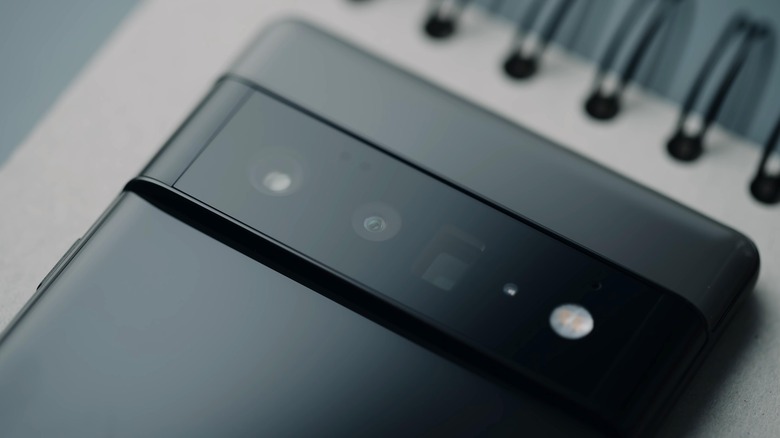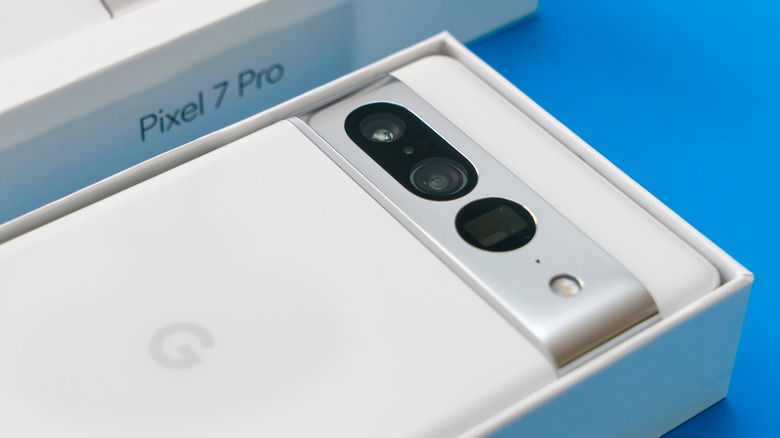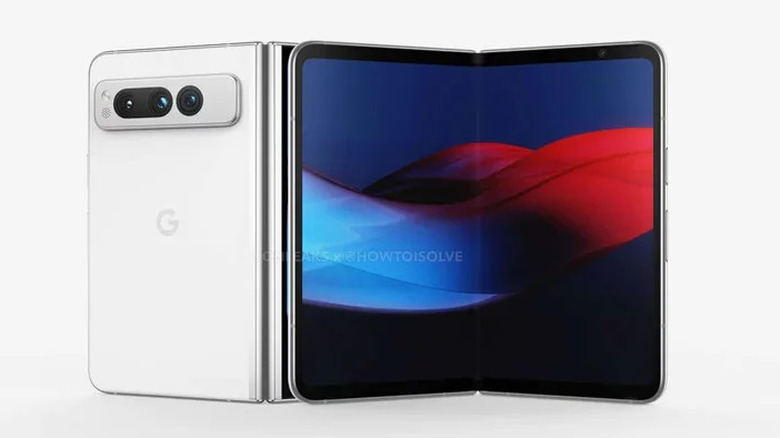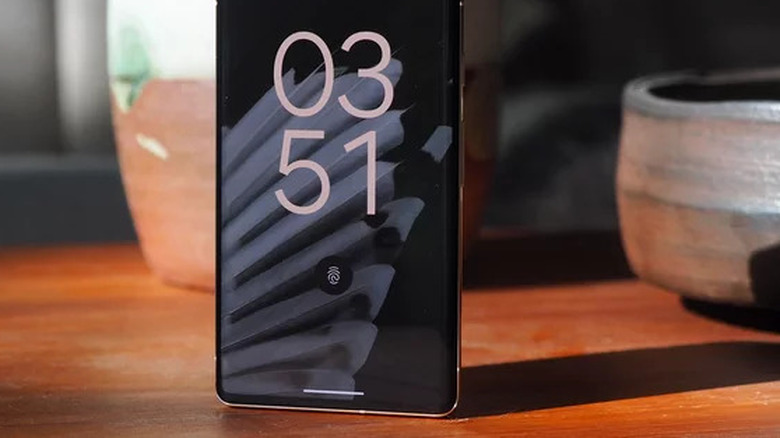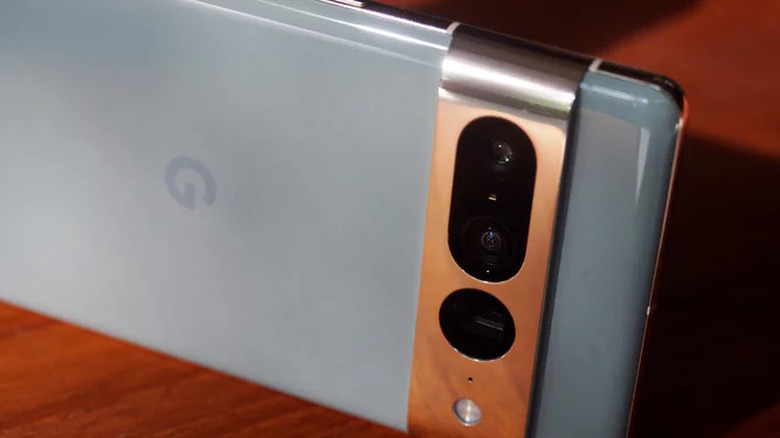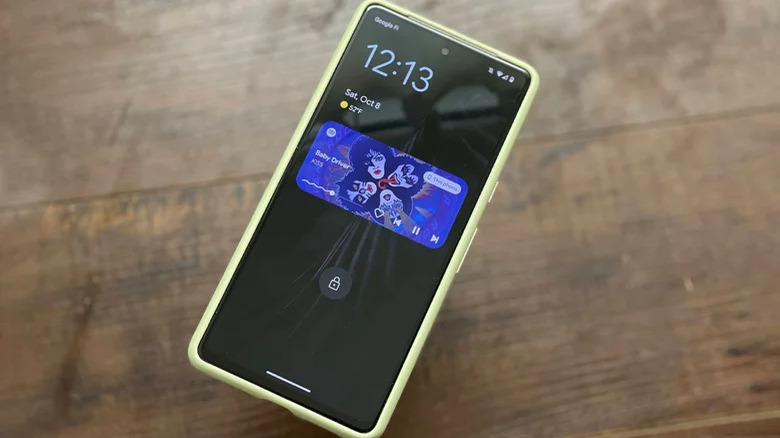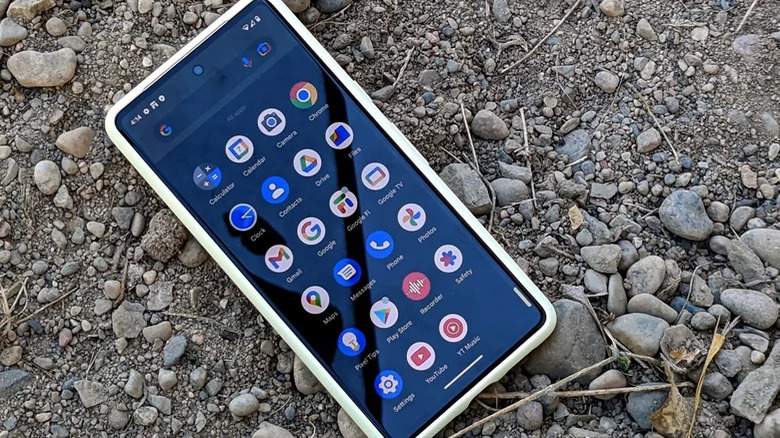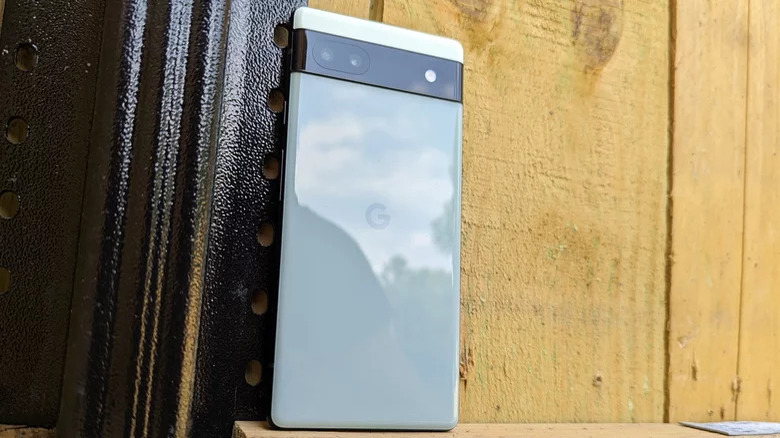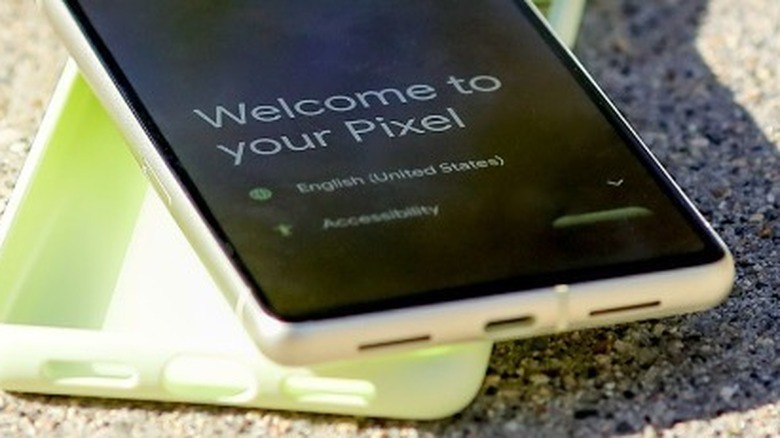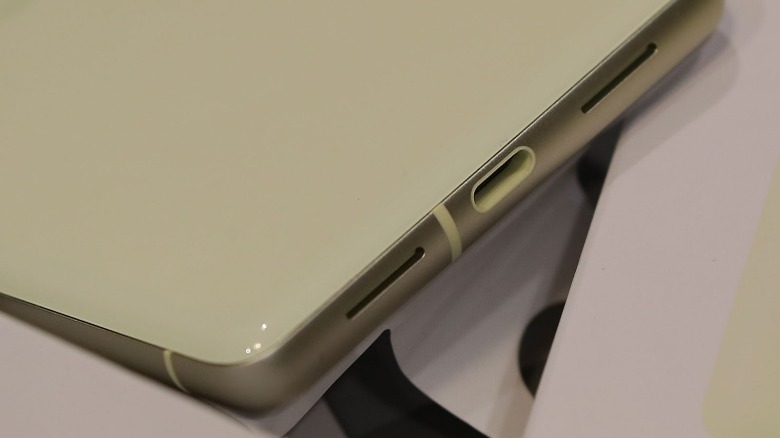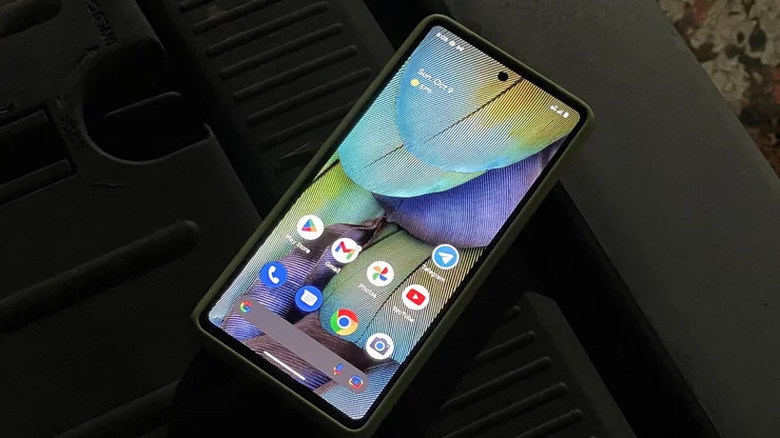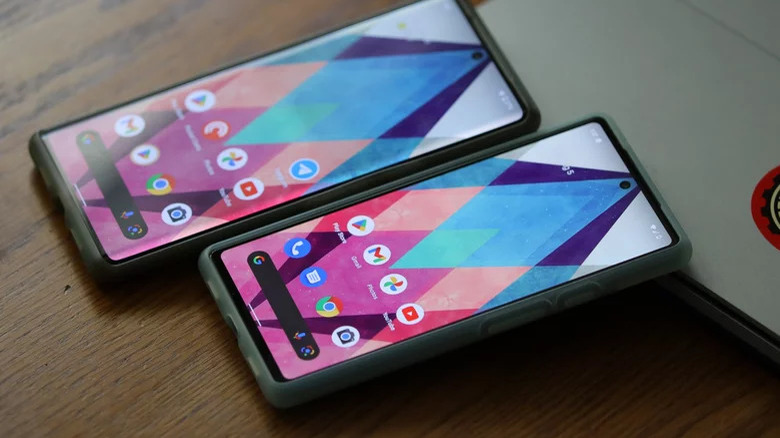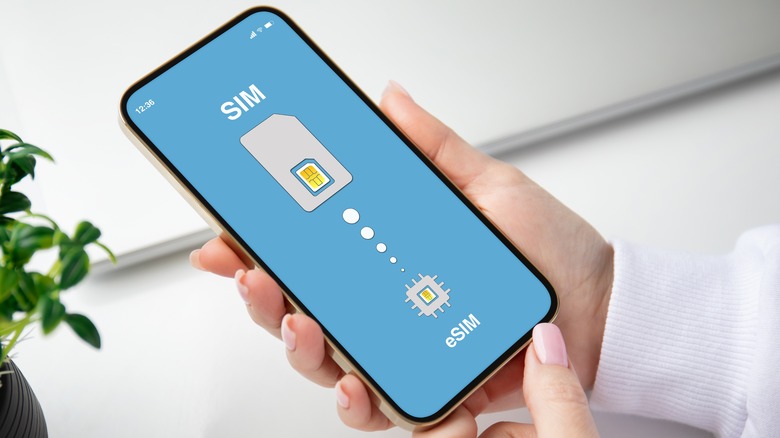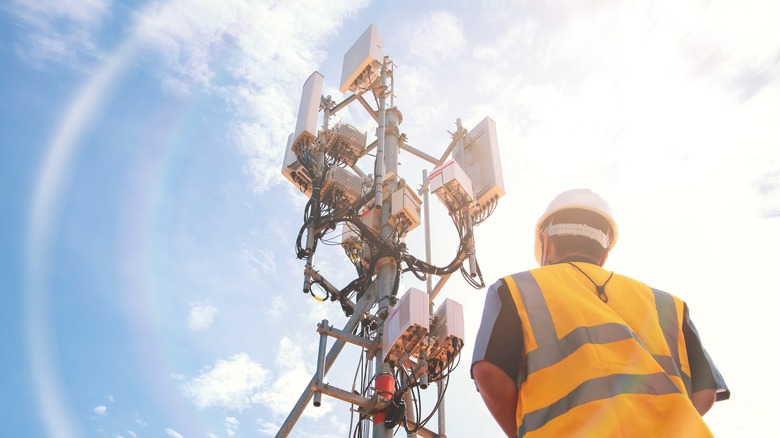Google Pixel Fold: Features The Foldable Smartphone Needs To Have
Google's Pixel line of smartphones has been capturing hearts and stellar photographs ever since its first launch in 2016. Every year since, Google has revamped, reiterated, and redesigned the flagships, which always score highly on reviews, even if the sales figures are only a few percent of the overall market.
The company has had rumors of it developing foldable devices for a long time now, with every year bringing new leaks and corresponding reports of delays. That's about to change, with 2023 looking like the year that the Pixel Fold makes it to market. This was further cemented when Android Authority got its hands on the Pixel roadmap, which mentions two devices coming at Google I/O in April or May of this year — codenamed Lynx and Felix.
Lynx refers to the Pixel 7a, with Google usually releasing the mid-range handset at the spring developers conference. Felix is the Pixel Fold, although we're not entirely sure that will be its official name when it is announced.
We've used a Pixel device or so throughout the years and have some thoughts on what Google needs to do for a successful first attempt at a foldable.
No major software bugs
The thing about foldable smartphones is that nailing the screen's hardware is only part of the equation — the software running on the phone must be bug-free. The market for foldables is still a fairly small percentage of the entire smartphone market, with any missteps amplified. Samsung salvaged things after the original Fold's disastrous non-launch, but that doesn't mean any other manufacturer can survive major issues.
Google might have an edge here given that it also develops Android, the operating system running on billions of devices. Pixel devices are guaranteed three years of major OS updates, and five years of security updates, so the Pixel Fold will likely have a longer software support window than competing foldables.
With Pixels running close-to-stock Android, the support for foldable screens is already there. App support is also good, thanks to the deep partnership with Samsung on compatibility issues.
What's not clear is if the Pixel Fold will launch with any self-inflicted software issues. Most Pixel releases had at least one major software issue, like the Pixel 6 having screen brightness and refresh rate issues and other quirks like the user interface not responding to inputs. The Pixel 7 also had some minor issues, with gesture navigation and sticky scrolling being some of the main complaints.
The Pixel Fold needs to nail the user experience to be a success, and that includes the software. Glitches or crashes will make a second device less likely.
No major hardware issues
Google's Pixel range has a long launch history of major hardware issues, going right back to the first Pixel in 2016. That device had two main issues, one that made the camera inoperable and one that gave the audio crackling distortion in some circumstances. The audio issue was hardware based, and the fix was to limit the maximum volume the device could reach.
Then the Pixel 2 XL had multiple issues with its OLED screen, including blue shift, drab colors, and the big issue — burn-in. The Pixel 3 had issues with the camera not saving some pictures and a faulty OIS that made the camera shake. The Pixel 3a had random shutdowns, the Pixel 4 XL had glass backs that loosened, the Pixel 4a overheats when taking video, the Pixel 5 had worrying gap issues between the screen and case, the Pixel 5a had overheating issues and a glitchy touchscreen, the Pixel 6 had Wi-Fi issues and slow fingerprint sensors, and the Pixel 6a overheats. And both the Pixel 6 and Pixel 7 devices had a security flaw in the modem that has been patched.
The picture here isn't rosy for Pixel, and the Pixel Fold introduces more complexity with the folding screen and the hinge mechanism. If this launch happens without a major hardware issue, it'll be the first time in the history of Pixel devices.
A reliable fingerprint sensor
The Pixel 6 and Pixel 6 Pro had a slow, inconsistent fingerprint sensor. The official line is that this is by design, with the sensor doing extra work to verify your finger is actually your finger before it will unlock the device.
This will be even more of a problem on a more expensive foldable as it won't match the feeling of a premium device. Android devices don't have Apple's Face ID system to use instead, and its own face unlock systems aren't secure enough for use with banking apps.
The good news for anyone wanting a Pixel Fold is that Google might remove the under-screen fingerprint sensor entirely. Other foldable devices, like the Galaxy Z Fold 4, use a fingerprint sensor that's embedded in the power button on the side of the device.
That's where serial leaker Jon Prosser, over at Front Page Tech, reckons the biometric scanner will be situated on the Pixel Fold. His renders and info come from physically seeing a supposed prototype, so while it's not confirmed by the manufacturer, it's pretty hard to reposition or redesign a fingerprint sensor at such a late stage.
Great camera performance
The camera performance is always the main selling point for the Pixel range. Google made digital magic happen with the computational photography it used to turn the 12-megapixel single sensor from early Pixel devices into one of the best cameras in the smartphone market. Adding additional cameras on recent devices hasn't slowed that, with performance that is among the top three.
The cameras on most foldables seemed to be an afterthought, with the manufacturers knowing users wanted them but having to figure out more important things like battery life and not shattering an OLED panel when bent in half. The Pixel Fold could change that, and pointers found in the codebase of Android show how.
Those code snippets point to Google keeping the 50-megapixel sensor that was used in the Pixel 6 and Pixel 6 Pro. Early development code also references the 12.2-megapixel sensor that Google used on early Pixels and references to the ultrawide camera sensor used on the Pixel 6a.
The two selfie cameras look like they will be 8-megapixel sensors from Sony, one on the front screen when folded and one above the larger screen when fully unfolded. That second camera isn't inside a hole-punch or under the display, instead, it's in the large bezel shown on the leaked renders.
Strong battery life
Most foldables of this form factor have all-day battery life if used sparingly. While foldables do have a larger volume inside for battery packs, a significant amount of that space is necessary to accommodate the folding aspect of the screen.
The Pixel Fold is supposedly heavier than other foldables with a similar form factor, and 9To5Google found out that part of that weight is because of a battery capacity closer to 5,000 mAh. That's bigger than any other foldable device on the market and could mean killer battery life from the phone.
Samsung's Galaxy Z Fold 4 has a 4,400 mAh battery and gets all-day usage. The Oppo Find N2 has a 4,520 mAh battery, Xiaomi's Mix Fold 2 has a 4,500 mAh one, and Huawei's Mate Xs 2 has a 4,600 mAh capacity. That alone puts the Pixel Fold ahead of the competition.
The reportedly larger battery on the Pixel Fold, coupled with Google's optimizations for Android and the Tensor G2 chip, could make this a foldable that doesn't need recharging before the evening. With a few tweaks to user routines, this might be the longest-lasting Pixel Google has designed.
Software support
Google is in an enviable position in the smartphone industry — it designs and codes the software running on them in Android and designs and makes its own smartphones. Well, maybe makes is a little far because Foxconn does the heavy lifting there, but that's no different to the other company that has control over the full stack, Apple.
The Big G also has been working on making Android better on foldable phones for as long as anyone. It partnered with Samsung to improve foldable support with Android 12L and continues that development partnership. Samsung's Flex Mode might be a One UI feature, but Google made the taskbar dock that features on the inner screen for multitasking purposes.
Android 13 improved on those features, making it better for larger screens or those that can change the aspect ratio. What's not clear is if the Pixel Fold will use Android 13 or Android 14. The latter brings better battery life and larger font scaling, which will be handy on a foldable. Google doesn't usually release the next version of Android publicly until the fall Pixel event, which will release the Pixel 8 range this year. A release window of May for the Pixel Fold seems early for Android 14, which only recently released the first public beta builds.
Better aftersales support
Historically, Google hasn't done the best job of customer support for its Pixel devices after they are purchased. For such a large company, it can be frustrating and fairly opaque to get any issues dealt with.
The main support channel for Pixel devices is an online forum, the Google Pixel Help Community. That's fine if you're a scrappy startup building devices in your garage, but Google has outgrown that substantially to the behemoth it is today. Getting your confused users to help each other is not a viable business plan for after-sales support.
Even when those forums are noticed by actual Google staff, sometimes the response is to try and sweep it under the metaphorical rug. The Pixel 5 had a manufacturing issue where a gap was present on some units between the screen and the body.
Clearly, that's a worry for users who paid for a flagship device, and could have affected water- and dust-proofing or become more of an issue if it caught on something. Google's response was akin to nothing to see here; we designed it that way, which is clearly wrong on so many levels.
For the Pixel Fold to succeed, Google is going to have to address the shortcomings of its support channels. The technology behind foldable screens is more mature now, but every version one of a consumer device from a manufacturer is going to have some teething issues.
More Pixel features
One of the big draws to purchasing a Pixel device is the Pixel-specific features that Google rolls out to its hardware. Features like Magic Eraser and Clear Calling are great, leveraging the Tensor chip to make using a Pixel easier. Google VPN helps Pixel 7 and Pixel 7 Pro owners stay safer while they do things online. We'd like to see some foldable specific Pixel features to sweeten the deal.
The current crop of rumors says that the Tensor G2 SoC will power the Pixel Fold. That means we should see the same camera tricks that the Pixel 7 and Pixel 7 Pro can muster, but maybe we'll see something new.
As to what those could be, we can only speculate. The Pixel 6 brought Face Unblur, Motion Mode, Magic Eraser, Real Tone, Live Translate, Ultra-wideband for Nearby Share, and some Google Assistant-powered features for phone calls so that AI can sit on hold for you. The Pixel 7 made all of these features better and added Clear Calling.
The Pixel Fold could get AI-powered features to make using the larger screen easier or face-tracking when using the larger cameras as a webcam to keep you in the frame. We'd love to see a stylus, but maybe that will be for a subsequent device.
Faster charging
Google does use PD-USB fast charging on its Pixel line, but nowhere near its full potential for charging speeds. The Pixel 7 is limited to 21W when using a PD-USB charger, 21W wirelessly when using the Pixel Stand (2nd gen), and 12W with Qi-certified chargers. The Pixel 7 Pro increases that to 23W either from wired or the Pixel Stand (2nd gen) or 12W with Qi-certified wireless chargers.
Samsung's Galaxy Z Fold 4, the current king of foldables, limits things to 25W when charged via cable or 15W wirelessly charged. That's good, but the other Android manufacturers use much faster charging on their devices. Even if we charitably exclude non-foldable devices, it shows that Google has some work to do in this area.
Oppo's Find N2 Flip has 44W SuperVOOC charging via its included charger. The company's first larger foldable, the Find N, had a 33W SuperVOOC charging speed. If the Pixel Fold brings faster charging than other foldables, it could put a jolt into the competition.
Better selfie camera (or ditch it)
The Pixel Fold needs one of two things to happen with the selfie cameras — improve or remove them from the device altogether. The inside one is probably handy for video calling, but as the leaked renders show an exterior screen, the front-facing cameras on the device could be used for video calls, and those are the ones anyone buys a Pixel for.
If Google isn't going to remove the selfie cameras, it needs to give them an overhaul. The pixel count is fine, and the computational photography for portrait mode only needs a tweak for better outline detection. What they really need is autofocus.
The last time Google used an autofocus selfie camera was on the Pixel 3. The fixed-focus cameras on the Pixel 7 and Pixel 7 Pro are good if you can hold the phone in the sweet spot but get slightly blurry anywhere outside of that range. For the price of a foldable phone, any blurriness is inexcusable.
Better quality screens
Google's current flagships use OLED panels, the same as all foldable phones. The Pixel 7 uses a 1080p resolution at 90Hz, and the Pixel 7 Pro has an LTPO 1440p panel running at 120Hz. While we don't know which supplier Google is using for the Pixel Fold, there are only a few companies making foldable OLED panels.
That should mean that the screens used on the Pixel Fold will be of comparable quality to other foldables and of better quality than its Pixel 7 range. Samsung Display is now selling its foldable panels to other manufacturers, and they are a prime candidate for use in Google's foldable. The company already supplies the screens for the Pixel 7 Pro and the Pixel 6 Pro, which use older technology than the Super AMOLED panels on the Fold and Flip ranges.
Other manufacturers with flexible OLED include LG, TCL, BOE, and Royale. Out of these, only LG has been used by Google for screens in the past, so it's possible it could be tapped again but Google is more likely to go with Samsung this time around.
Go eSIM only
The Pixel 7 kept the physical SIM card slot, even as others in the industry were ditching it for eSIM. That makes sense if you are selling phones to the rest of the world who love physical SIM or using dual SIMs. The thing is, Pixel is mostly sold to users in the U.S. who can use eSIM from any carrier. Google could ditch the slot to gain more waterproofing or use the slot for removable microSD cards for additional storage.
Apple did that on the iPhone 14 models sold in the U.S., removing the SIM tray so that eSIM is the only way to activate cellular service. With the major carriers in the U.S. all supporting the digital-only format, this enabled Apple to gain some water protection and strengthen that section of the frame. This move didn't go terribly smoothly, with negative sentiment from some Apple users.
On a foldable device, ditching the SIM slot makes more sense. It removes a weak area of the frame, frees up internal space for more battery, and foldable users are pretty tech-savvy.
5G mmWave as standard
You might not need the faster speeds and better connectivity of 5G on your smartphone, but you shouldn't accept its absence on a premium foldable device. The Pixel Fold needs to have both sub-6GHz and the faster, shorter-range mmWave flavors of 5G when it launches later this year — without any upcharge for its inclusion.
There are two variants of the Pixel 7 sold in the U.S., one with sub-6GHz support and one with sub-6GHz and mmWave support. Only Verizon and AT&T sell the one with mmWave inclusion, charging a $100 premium for the privilege. The Pixel 7 Pro supports mmWave and sub-6GHz, so there are no confusing price and feature switches.
For a foldable device like the Pixel Fold, it needs to go the second route, as befitting its premium status. The only foldable devices that don't support 5G are those from Huawei, as the manufacturer has been cut off from using the 5G modems by the bans and sanctions imposed by the U.S. and the international community.
